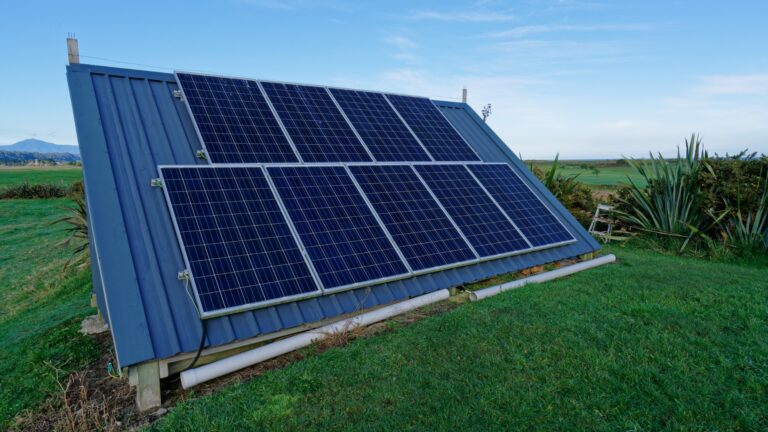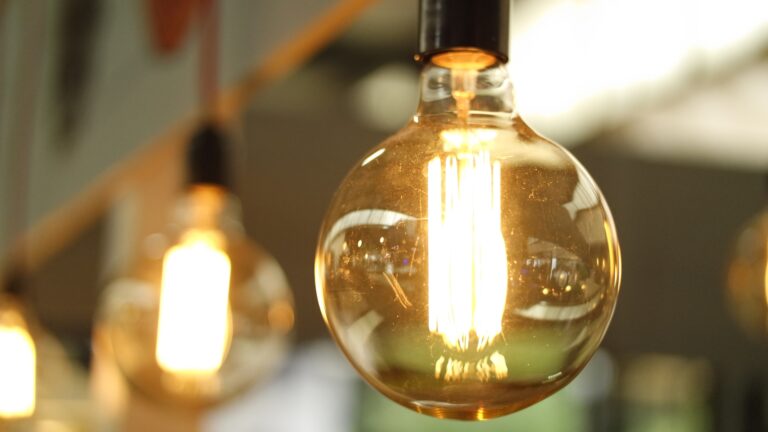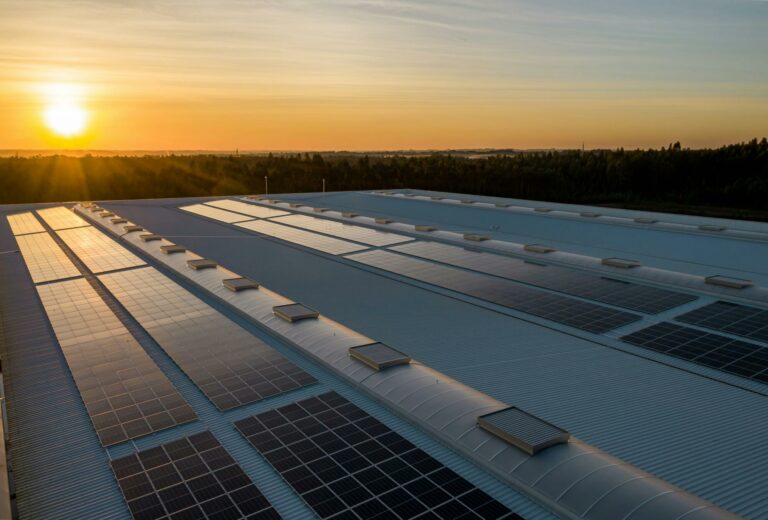As a commercial property manager, making smart decisions about your building’s energy consumption is essential to maximize efficiency and reduce costs. With the rise of sustainable practices, one solution that stands out is solar energy.
But did you know there are two primary strategies for harnessing the sun’s power? Enter passive and active solar energy systems. In this blog post, we’ll dive into both types and explore their implications for your commercial property.
Discover how these innovative technologies can revolutionize sustainability in your building by reading on.
Key Takeaways
- Solar energy provides an eco-friendly and cost-saving alternative to traditional fossil fuels for commercial properties.
- Passive solar design utilizes strategic building orientation and materials while active solar systems use mechanical equipment like solar collectors to capture and transfer the sun’s energy into usable forms.
- The decision between passive and active solar energy depends on factors such as cost, maintenance requirements, efficiency, and control.
- Implementing a high – quality solar system can lead to significant cost savings, increased property value, and reduced carbon footprint. Consulting with experts at Huston Solar can help determine which option is best suited for your specific needs.
Understanding Solar Energy
Solar energy is a form of renewable energy that harnesses the power of the sun to generate electricity or heat.
What Is Solar Energy?
Solar energy refers to the power harnessed from the sun’s rays, which can be transformed and utilized in various ways to provide electricity, heating, and cooling for homes, businesses, and commercial properties.
Commercial property managers should consider solar energy as an investment that not only benefits the environment but also helps cut costs on utility bills. For example, Walmart installed over 1.5 million solar panels across its facilities in the United States since 2010, generating enough clean energy to power more than 260 thousand homes annually while contributing significantly toward their sustainability goals.
Types Of Solar Energy: Passive And Active
Solar energy, a sustainable power source abundant with potential, can be harnessed in two distinct ways: passive and active. Passive solar energy focuses on incorporating strategic design elements within structures to optimize the sun’s heat and light without relying on mechanical devices.
On the other hand, active solar energy involves systems that directly convert captured solar rays into usable forms like electricity or hot water. This method typically employs photovoltaic (PV) panels to generate electricity and solar thermal collectors to produce hot water.
Active systems allow commercial property managers greater control over their energy consumption while providing an opportunity for long-term financial savings through reduced utility bills.
Passive Solar Energy
Passive solar energy utilizes the natural elements of building design and orientation to optimize heating and lighting, making it an environmentally friendly option that saves money in the long run.
Definition And Examples
Passive solar energy harnesses the sun’s heat and light through strategic building design, placement, and choice of materials without relying on any complicated mechanical systems.
Commercial property managers can benefit from several examples of passive solar strategies utilized in modern buildings. For instance, south-facing windows allow for maximum sunlight exposure during winter months, providing warmth to interior spaces through natural thermal gains.
Building materials with high thermal mass – such as brick, stone, or concrete – help store this solar heat during the day and release it slowly throughout the night when temperatures drop.
Other examples include shading devices like overhangs or awnings to maintain cooler indoor temperatures by blocking direct sunlight during hot summer days and strategically placing vegetation around a building to provide shade while allowing cool breezes to flow freely.
Benefits And Limitations
Passive solar energy offers many benefits for commercial properties. By utilizing natural sunlight and thermal mass, it can reduce the amount of energy needed for heating and cooling while cutting down on electricity bills, maintenance costs, and greenhouse gas emissions.
However, there are limitations to passive solar design that should be considered in its adoption. For example, good site selection is vital to ensure adequate exposure to sunlight throughout the year.
Also, careful planning of window placement and shading devices is necessary to avoid excessive heat gain during summer months or inadequate heat retention during winter months.
Active Solar Energy
Active solar energy utilizes mechanical devices, such as solar collectors and pumps, to capture and transfer sun’s energy into usable forms for heating or electricity in commercial properties.
Definition And Examples
Active solar energy, as opposed to passive solar energy, involves the use of mechanical equipment or electricity to amplify and utilize the sun’s rays. Examples of active solar systems include photovoltaic (PV) panels that convert sunlight into direct electrical power and heat pumps that transfer absorbed thermal energy from a collector to provide hot water for buildings.
In commercial properties, active solar heating systems can be used to heat a fluid which is then transferred directly into interior spaces as radiant heat. Unlike passive solutions, these technologies require proper installation and regular maintenance to ensure optimal performance throughout their lifespan.
Benefits And Limitations
Active solar energy systems offer numerous benefits for commercial properties, including their ability to provide consistent and reliable performance. By converting the sun’s energy into hot water or electricity, active solar systems can significantly lower your property’s energy costs while decreasing your reliance on fossil fuels.
However, it’s important to note that there are some limitations to consider when deciding whether an active solar system is right for your commercial property. For one thing, these systems typically require more maintenance than passive solar designs and may be more sensitive to changes in weather conditions.
Additionally, the initial cost of installation can be higher compared with a passive design, although there are tax incentives available that can help offset this expense over time.
Passive vs Active Solar Energy: Costs
Passive and active solar energy differ in cost, maintenance requirements, technology, efficiency, and control.
Cost
One of the most significant factors to consider when choosing between passive and active solar energy systems for your commercial property is cost. Generally, passive solar systems are less expensive to install than active ones because they require fewer mechanical components.
However, the costs may vary depending on various factors like location, size of your property, and its energy requirement. Active solar heating systems typically have a higher upfront investment but offer more long-term savings in terms of reduced utility bills and potential tax incentives.
For instance, investing in an active system can result in a federal tax credit of up to 26%. In contrast, some states offer rebates or exemptions for installing renewable energy sources like solar panels.
Maintenance And Technology
Active solar energy systems require more maintenance and technology than passive solar energy systems. This is because active systems typically have moving parts, electronic devices, and storage units that need to be regularly maintained.
On the other hand, passive solar energy systems require little or no maintenance since they use simple elements such as building materials to absorb and transfer heat naturally.
However, properly designing a passive solar system requires careful consideration of factors such as orientation, insulation levels, and window placement to achieve optimal performance.
Passive vs Active Solar Energy: Efficiency And Control
One important factor to consider when choosing between passive and active solar energy for your commercial property is efficiency and control. Active solar systems often provide better control over heating and cooling, allowing you to adjust the temperature as necessary.
Passive solar design can be incredibly efficient when done correctly, with walls, windows, and other features aligned perfectly to capture sunlight at specific times of day.
This means less energy is needed overall to heat or cool the space. On the other hand, active systems require more maintenance and monitoring to ensure optimal performance.
Implications Of Solar Energy In Commercial Properties
Implementing solar energy in commercial properties can lead to significant cost savings, increased property value, and reduced carbon footprint. However, it’s essential to weigh the benefits and limitations of both active and passive solar systems before making a choice.
Benefits Of Solar Energy For Commercial Properties
Commercial properties have much to gain from adopting solar energy solutions. One of its biggest benefits is reducing utility costs, which can significantly improve a building’s return on investment.
Moreover, commercial buildings require ample amounts of electricity to power lighting, HVAC systems, and other equipment essential for daily operations.
Another benefit of switching to solar energy is increased sustainability and environmental responsibility. The use of renewable sources such as solar energy contributes towards reducing greenhouse gas emissions responsible for climate change.
Incorporating sustainable practices in commercial buildings has become increasingly important for corporations interested in minimizing their carbon footprint while demonstrating corporate social responsibility (CSR).
Factors To Consider When Choosing Between Passive vs Active Solar Energy
Choosing between passive and active solar energy can be challenging.
Firstly, cost is a crucial consideration. Passive solar energy is often cheaper to install since it doesn’t require expensive equipment.
Secondly, maintenance and technology are also essential factors to consider. Passive solar systems require minimal maintenance but rely heavily on architectural design elements such as orientation or insulation for optimal efficiency.
Lastly, efficiency should be taken into account when deciding between the two options.
In conclusion, choosing between passive versus active solar energy depends on various aspects like cost-effectiveness, ease of maintenance requirements, technology used or expected levels of efficiency optimisation needed based on weather conditions amongst other things
Implementing Solar Energy On Your Commercial Property: Huston Solar’s Commercial And Industrial Solutions
Huston Solar offers a comprehensive range of commercial and industrial solar solutions, including consultation, design, installation, and maintenance services to help you make the right choice for your property.
Consultation And Assessment
Before implementing solar energy on your commercial property, it is essential to consult with experts in the field. At Huston Solar, we provide consultation and assessment services to help you determine the best approach for your business needs.
During the assessment process, we will work with you to understand your goals and budget constraints so that we can develop a customized solar PV system that meets all of your requirements.
Design And Installation
Design and installation are crucial steps in implementing solar energy solutions for your commercial property. At Huston Solar, we provide comprehensive consultation services to help you choose the right system design that suits your building’s architecture and energy needs.
Once the design is finalized, our dedicated professionals will ensure a seamless installation process. We use high-quality materials and state-of-the-art equipment to ensure that everything is installed properly, giving you peace of mind knowing that your investment is secure.
Maintenance And Monitoring
Implementing solar energy on a commercial property requires regular maintenance and monitoring to ensure that the system is functioning properly and efficiently. With passive solar systems, there may be less need for maintenance as they do not involve mechanical or electrical components, but upkeep is still necessary.
Active solar systems, on the other hand, require more intensive maintenance because they involve complex mechanical and electrical equipment. Regular inspection and servicing of these components are necessary to ensure that the system functions effectively over its lifespan.
Passive vs Active Solar: Making The Right Choice For Your Commercial Property
As a commercial property manager, you have to make the right choice when it comes to implementing solar energy solutions. Both passive and active solar energy systems offer significant benefits, but your decision should depend on several factors such as location, budget, and maintenance requirements.
For example, if your property receives ample sunlight throughout the day and requires a low upfront cost with minimum maintenance requirements, then passive solar energy could be suitable for you.
It’s important to note that regardless of which system you choose, going solar can significantly reduce your utility bills while also increasing your property value. Plus, using sustainable development practices like using renewable energy sources can help mitigate environmental impacts caused by traditional sources like fossil fuels.
Passive vs Active Solar Energy Conclusion
When it comes to powering your commercial property with solar energy, there are two main options: passive and active. Passive solar energy relies on design, materials, and placement to make use of the sun’s heat and light without any mechanical equipment.
Active solar energy uses devices like solar collectors to harness the sun’s energy for heating or electricity generation.
While both types of solar technology can be effective in reducing reliance on fossil fuels, the decision between passive and active depends on factors like cost, maintenance requirements, and overall efficiency.
Investing in a high-quality solar system can not only save you money over time but also demonstrate your commitment to sustainability as a business owner or manager.
At Huston Solar, we offer professional consultation services along with design and installation support tailored specifically toward our clients’ unique commercial space needs.
About Huston Solar: The Company Behind Indiana’s Solar Energy Solutions
Huston Solar is a leading company that specializes in providing commercial and industrial solutions for sustainable solar energy. They offer consultation, design, installation, and maintenance services to help businesses achieve the benefits of renewable energy.
With years of experience in the industry, Huston Solar has successfully implemented both passive and active solar energy solutions for various commercial properties. Our goal is to provide innovative and cost-effective solutions that maximize efficiency while reducing environmental impact.
Whether you are looking for a way to reduce your carbon footprint or want an alternative source of power that can save on monthly expenses over time – Huston Solar can help guide you through the process from start to finish with their comprehensive suite of services related to both passive and active solar energy solutions.
Get in touch today!
Passive vs Active Solar Energy FAQs:
1. Passive vs Active Solar Energy
Passive solar energy refers to using the design of a building or property to naturally collect heat and light from the sun, while active solar energy involves using technology such as photovoltaic panels or solar hot water systems to convert sunlight into usable electricity.
2. Which type of solar energy is better for my commercial property?
The best type of solar energy for your property depends on various factors such as location, climate, building orientation and size, available resources, budget constraints and more. A professional consultation with a reputable renewable energy company can help you determine which option may be most suitable for your specific needs.
3. What are some benefits of investing in passive or active solar energy for my commercial property?
Investing in either form of solar energy can result in significant long-term savings on utility bills while also reducing your carbon footprint and contributing towards a cleaner environment. It can also increase the value of your property by making it more attractive to environmentally-conscious tenants or buyers.
4. Does installation of a passive or active solar system require any permits or approvals from local authorities?
Yes, both types require proper permitting approval before installation by local authorities that oversee zoning laws, safety codes and environmental regulations that may impact how they are designed installed within specific regions/areas so it’s important contact these officials prior starting any project involving major construction activities like those involved with installing PV panels rooftops etc..



